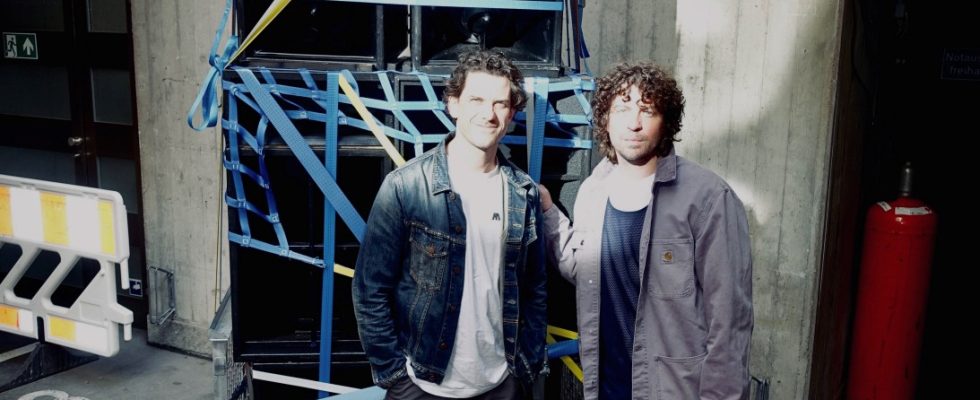Creative competence
The “Mixcamp” DJ workshops take place on three weekends in autumn in the “Charlie” music bar in Untergiesing. They were initiated by the organizers Manuel Kim and Benjamin Röder. “We currently see a big gap between club supply and demand,” says Röder. The corona pandemic and the associated closures in 2020 and 2021 have left their mark. “We are currently seeing a great lack of opportunities and information options for effective action in Munich’s nightlife compared to international and national standards,” says Röder. “It has become extremely difficult for restaurateurs and club owners to find young people for all the positions they need.” This is missing, for example, in the bar, door and technology – and also in the DJ booth.
That’s why Röder and Kim organized workshops last year with the financial help of a grant from the Free State, which they are able to relaunch this year with the support of the Creative Industries Competence Team. DJs from Munich, New York and Amsterdam will be present in subsequent open discussions. For Röder and Kim, it is important to make access to professional equipment and nightlife easier with a free offer. The workshops will first deal with the technical basics of mixing, says Röder. However, they would not put pure technology at the top, because more important is the musical flair and the ability to emotionally engage an audience with the selection, says Röder. “It’s all about the music!”
Change of course
Brigitte Böhm.
(Photo: private)
The visits to the German Museum have Brigitte Böhm fascinated even as a child. Later she spent many Sundays there with her own children. Without private sponsors, however, many didactic offerings would not exist, such as the new app or the glass laboratory. Böhm is a chemist and patent attorney, recently retired, and has now taken over the chairmanship of the Friends and Supporters’ Group of the German Museum from her predecessor Sabine Rojahn. Networking and collecting donations to make the famous museum even more attractive is their goal. “We will also campaign for the preservation of the mine,” she says.
Children and small animals

Mara Eibl-Eibesfeldt.
(Photo: Lancelot by Naso)
“Never film with children or animals,” film veterans claim, it’s simply too unpredictable, too nerve-wracking and too attention-stealing (for all the other actors). Fortunately, this is regularly ignored by filmmakers; otherwise the children’s and family film genre would look different. Also the director and screenwriter born in Gräfelfing Mara Eibl-Eibesfeldt didn’t let such advice stop her; in her adventure film “Thabo, the Rhino Adventure”, which has just been released in cinemas, she even combines one supposed no-go with the other. In the film adaptation of a children’s book by Kirsten Boie, a 13-year-old boy plays the main role, accompanied by lions, giraffes, elephants, antelopes and a baby rhino named Daisy.
The director claims that working with Daisy was “a particularly great surprise”: “Simply because it worked incredibly well.” Much more challenging was a car that was in need of repairs – and the many corona cases on set. The film was shot during the pandemic in northeastern South Africa and in Eswatini and was produced by Munich producer Peter Herrmann (“Desert Flower”, “Nowhere in Africa”). “Thabo, the Rhinoceros Adventure” is the second cinema production for the 43-year-old director; in 2015 she made her debut with the film “Im Spinnwebhaus” at the Berlinale in the “Perspective German Cinema” series. She was already filming with children (and small animals) back then, and the poetic film fairy tale was subsequently invited to many international festivals. The filmmaker studied in Berlin and at the HFF Munich and spent the first years of her life in Weßling. Her famous grandfather, the behavioral researcher Irenaeus Eibl-Eibesfeldt, who died in 2018, also lived in the Five Lakes Region. He observed exotic animals throughout his life, and his granddaughter, who now lives in Berlin with her family, does the same – in her own way.
Cult footballer

Thomas Müller.
(Photo: Matthias Schrader/AP)
The communicative striker Thomas Müller, 34, from FC Bayern has long been an unofficial co-host at the championship celebrations on the town hall balcony and goes by the nickname Radio Müller. Amazon is now making a documentary about him, about which Müller says: “The path from the village square in Pähl via FC Bayern Munich to the world championship title was a story like something out of a fairy tale for me.” In every athlete’s life there are also moments that you no longer want to experience. “Perhaps they are sometimes even more memorable for viewers.” Commented by Radio Müller probably already.
Cat content

Laurent Frantz.
(Photo: LMU)
Cats, the unknown creatures: An American scientist has discovered that domestic cats have at least 276 different facial expressions. To do this, Brittany Florkiewicz and her team spent a year researching videos from a cat café in Los Angeles. About half of the expressions were friendly in nature, 37 were clearly aimed at aggression and the remaining 18 percent were somewhere in between.
The domestic cat came to Europe from the Middle East more than 2,000 years ago and has since shared its range with the native European wildcat. When it comes to reproduction, the species avoided each other for a long time. This is shown by genetic analyzes by a research team led by the LMU paleontologist Laurent Frantz and Greger Larson (University of Oxford, UK). “Wild cats are solitary animals, while domestic cats can live in much higher densities,” says Frantz. However, it is not yet known how many emotions wild cats can show.

